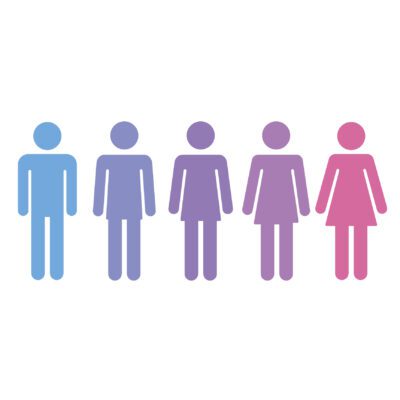For the past few weeks, the federal government has been under a partial shutdown after the Senate failed to pass a spending bill that includes border wall funding. President Trump has said he will not sign any additional funding that does not include $5.1 billion in additional money to pay for an extension of the border wall.
Here is what you should know about shutdowns and how they affect the country.
What is a government shutdown?
As with any business or organization, federal government agencies have operating costs (salaries, utility bills, and more). The money for these expenses comes from tax dollars, but must be appropriated (i.e., devote money or assets for a specific purpose) by Congress.
The source of Congress’s power to spend comes from Article I, Section 8, Clause 1 (“No money shall be drawn from the Treasury, but in Consequence of Appropriations made by Law.”). This section, known as the Appropriations Clause, allows Congress to control spending by the federal government. Appropriations are annual decisions made by Congress about how the federal government spends money during the fiscal year.
Most government spending is mandatory spending, which means Congress has passed a law requiring monies to be used for specific purposes. Examples of mandatory spending are Medicare and Medicaid, Social security, and unemployment benefits. Approximately 35 percent of government spending, though, is discretionary spending. This type of spending includes spending on such things as defense, homeland security, and education. Congress has to authorize this spending for the federal agencies to receive this funding.
Federal law requires total appropriations for discretionary spending to be divided among the 12 subcommittees dealing with different parts of the federal budget. These subcommittees decide how to distribute funds and issue 12 individual spending bills. Sometimes many of them are combined into an omnibus appropriations bill, or a few are combined into a minibus appropriations bill.
When Congress fails to pass an appropriations bill that covers all 12 areas, or when current appropriations expire, or when the president refuses to sign a funding bill, it forces a government shutdown.
A partial government shutdown occurs when some government agencies have already been funded by other legislation but there remain some of the 12 areas that still need funding.
What parts of the federal government are affected by the shutdown?
Several government agencies were already funded for fiscal year 2019. But another funding bill was needed to cover several agencies for about seven weeks. Nine out of 15 federal departments, dozens of agencies, and several programs are closed or have reduced operations:
- Department of Commerce
- Department of Homeland Security
- Department of Housing and Urban Development
- Department of Interior
- Department of Justice
- Department of State
- Department of Transportation
- Environment Protection Agency (EPA)
- Federal Drug Administration (FDA)
- United States Department of Agriculture (USDA)
- Programs related to science, financial services, and other agencies
- The National Flood Insurance Program
- The Violence Against Women Act
- The Pesticide Registration Improvement Act
- Temporary Assistance for Needy Families
- Immigration extensions (EB-5, E-Verify, Conrad 30 program for international medical school graduates, Special Immigrant Religious Workers program, and H2B returning worker authority for DHS)
- The Chemical Facility Anti-Terrorism Standards Act
- Two expiring provisions of the Pandemic All-Hazards Preparedness Act
- Medicaid Money-Follows-the-Person and Spousal Impoverishment, through March 31
Is federal law enforcement affected?
According to the Senate Appropriations Committee, more than 41,000 federal law enforcement and correctional officers are affected, including:
- 2,614 ATF agents
- 16,742 Bureau of Prisons correctional officers
- 13,709 FBI agents
- 3,600 deputy U.S. Marshals
- 4,399 DEA agents
- 54,000 Customs and Border Protection agents and customs officers
- 42,000 Coast Guard employee
Why don’t government agencies just ignore the shutdown?
Under a federal law known as the Anti-Deficiency Act, it can be a felony to spend taxpayer money without an appropriation from Congress.
The entire government doesn’t actually shut down during a government shutdown, does it?
No. Even in a full, rather than partial, shutdown, programs deemed “essential”—which include, among other agencies and services, the military, air traffic control, food inspections, and more—would continue as normal. “Nonessential” programs and services such as national parks and federal museums would be closed. Federal workers deemed nonessential are also furloughed.
Are government benefit checks affected by the shutdown?
Not directly. Benefits like Social Security, Medicare, and retirement for veterans are mandatory spending, so they are unaffected. However, if the workers who mail the checks are considered “nonessential,” it may result in delays in the checks being sent out.
Are federal food stamps affected by the shutdown?
Not yet. The nation’s food stamp program—known as the Supplemental Nutrition Assistance Program (SNAP)—is administered by the U.S. Department of Agriculture. Although the Agriculture Department is affected by the shutdown, SNAP is funded through February. However, if the shutdown lasts into March, about 42 million Americans will be affected.
A similar program, the Special Supplemental Nutrition Program for Women, Infants, and Children (WIC), provides food assistance for pregnant, postpartum and breastfeeding women, infants, and children up to age 5. That program will also be affected if the shutdown lasts past February.
Will government workers still get paid?
Some will and some will not.
Federal workers who are required to keep working (i.e., “excepted employees”) do not get paid during the shutdown but will receive back pay after the shutdown is over. As the Office of Personnel Management guidance explains, “Agencies will incur obligations to pay for services performed by excepted employees during a lapse in appropriations, and those employees will be paid after Congress passes and the President signs a new appropriation or continuing resolution.”
Federal workers placed on furlough (a forced leave of absence) will also not get paid during a shutdown. However, after past shutdowns, Congress has always voted to pay furloughed workers retroactively. About 380,000 workers fall into this category.
The situation for federal contractors, those who are hired by the government to perform work but that are not direct federal employees, is more complicated. Private companies who are contracted by the government hire many low-wage employees, such as security guards and janitorial service workers. Depending on the type of contractual arrangement they have with the government, they may not get paid and so will be unable to pay their workers. About 4 out of every 10 people who work for the federal government are private contractors.
How do lawmakers work if the Capitol is shut down and their workers are furloughed?
Congress is exempted from the furloughs and the Capitol building will stay open, so lawmakers aren’t really affected. Several types of executive branch officials and employees are also not subject to furlough. These include the president, presidential appointees, and federal employees deemed excepted by the Office of Public Management.
Will the shutdown save the government money?
Not if past shutdowns are any indication. The Committee for a Responsible Federal Budget reports that estimates vary widely, but “evidence suggests that shutdowns tend to cost, not save, money.” A recent shutdown cost the government $1.4 billion, according to an estimate by the Office of Management and Budget.
How many shutdowns have there been?
Since 1976 there have been almost two dozen shutdowns—including three under President Trump. However, before the 1980s, the government continued operating at reduced levels without furloughing workers. The two shutdowns in 2018 lasted mere days while the shutdown in 2013 lasted 16 days.
Prior to that was the longest shutdown of modern history—a 21-day shutdown in December 1995 that came soon after a five-day shutdown that lasted from November 13-19. Those shutdowns were sparked by a disagreement over tax cuts between then-President Bill Clinton and former House Speaker Newt Gingrich.
If it lasts until Sunday, January 12, the current shutdown will be the longest in U.S. history.










